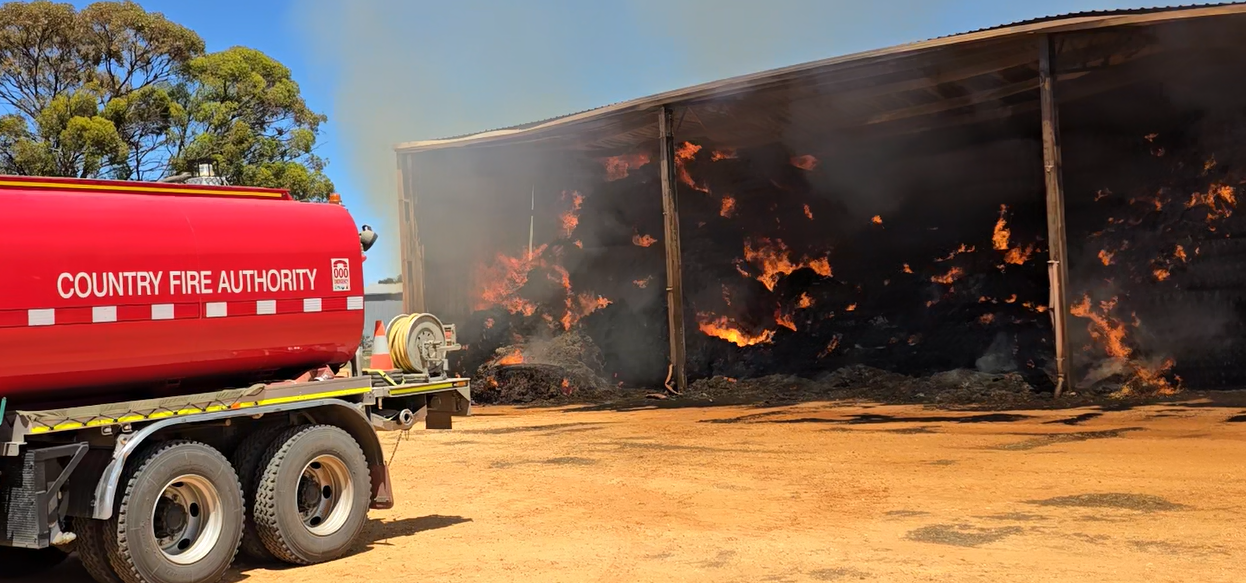
CFA is reminding farmers about the risks of improper hay storage after two devastating haystack fires destroyed at least 1700 hay bales in separate parts of the state recently.
A fire in Coonooer West on Tuesday (10 Dec) claimed 1,200 bales, a hayshed, and several pieces of machinery, while just last week a fire in Naring saw another 500 bales destroyed.
Haystack fires are often caused by spontaneous combustion when hay is baled with excess moisture. High moisture levels, combined with the compact nature of hay bales, can create internal heat, leading to ignition.
Between 30 June 2023, and 1 July 2024, CFA responded to 121 haystack fires in regional areas.
CFA District 16 Assistant Chief Fire Officer Stephen Alcock said the incidents served as a reminder for farmers to closely monitor their haystacks.
"These fires demonstrate the devastating impact haystack fires can have," Stephen said.
"Once a fire starts, it spreads rapidly through the bales, making it extremely challenging to contain.
"High moisture levels in hay, often from baling too early in the day when it's dewy or after rain, are a major contributor to spontaneous combustion."
He also stressed the dangers of storing machinery with hay bales.
"Storing machinery with hay bales is a recipe for disaster," he said.
"If a fire starts in the haystack, it can quickly spread to nearby machinery, which can halt important farming operations until new equipment arrives."
"The safest option is to store hay in a separate area well away from equipment and other buildings.
"Haystack fires don't just affect individual properties; they can spread to neighbouring farms and require extensive emergency services resources.
"Regular monitoring and proper storage can turn what might have been a major issue into something manageable."






